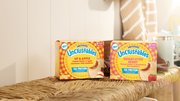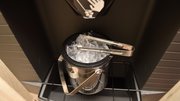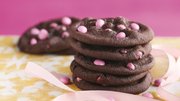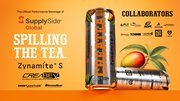Blog
Rethink Small-Batch Brewers To Satisfy Broader Range Of Palates
April 16, 2015 | Kevin Daw
TAGS: Vending Times columnist, vending, office coffee service, OCS editorial, coffee industry, coffee market, coffee roasting, Heritage Coffee, Kevin Daw, batch brew coffee, coffee brewer, Starbuck, Dunkin' Donuts, Specialty Coffee Association of America, robustas |
I recently bought an extra-large cup of coffee at a convenience store. I know, I know: what was I thinking? I was thinking that I could kill two birds with one stone as I needed gas, and secondly, my iPhone reported that the nearest Starbucks and Dunkin' Donuts were both a bit too far out of the way; yet I still desperately wanted a coffee. We can debate the subjective qualities of these chains but in the end, I needed a coffee. I was quite surprised by the price tag at the register, which came in at over $2 for what looked to be a 24-fl.oz. cup.
Convenience stores have gotten wise and improved their offerings over the years. What you can get in them today is a great improvement over what was available as recently as 10 years ago, in many cases. The cost of this upgrade to them was likely no more than 7¢ a cup, including blend upgrade and weight increase per pot.
Net effect: they are making a lot more money on coffee today than they have ever have done in the past. Coffee has always been neck-and-neck with soft drinks as the biggest-margin items in the c-store segment, and the growth in demand for higher-quality coffee industrywide has likely pushed coffee into the top margin spot once again.
Our industry has always seen access to coffee outside the office as a part of the competitive landscape, and I believe that our industry segment was, for a good while, free to look down our respective noses at the c-store sector as offering inferior coffees -- just as the specialty industry has too often, and not always fairly, looked down their respective snouts at ours.
Having said that, the playing field has leveled somewhat and with the surge in single cup coffee offerings maybe tilted in favor of away-from-office brew.
No offense to all the brew-by-cup options out there, but in most cases, strength is limited by volume of grounds and brew time, precluding any possibility of getting to the type of strength attainable with open brew, and that foodservice outlets therefore enjoy.
The Gold Cup standard, reestablished years ago by the Specialty Coffee Association of America and set very high, has as its most important criterion the total dissolved solids found in the finished brew. This is a measurement of solubles to water, and is the gauge of the coffee's strength. When it was first established, the quality of the actual coffee grounds was not even a consideration, due either to oversight or to the assumption that there would be a minimum quality level inherent in any coffee being brewed at a ratio of 3.25 oz. to 64 fl.oz. of water. Why would anyone want to brew robustas to that strength?
Since you know that your clientele is experiencing a stronger, bolder cup from many alternative sources, have you looked to fill that gap left open with the placement of your single-cup brewers? Have you offered a simultaneous open-brew option? I have to assume that, in many cases, the answer is no, as many old OCS friends whose businesses I visit do not even have a drip brewer I can use to sample my latest, greatest 2.5-oz. offering!
How many disgruntled strong coffee drinkers are still vacating their cubicles to run downstairs to the café, cart or doughnut shop of choice to refill their 24-fl.oz. mugs before resuming their duties? Would these lost sales warrant a small open-brew system to accommodate all office coffee drinkers?
Have you considered offering this to prospective accounts as a way of getting in the door? The sale should be an easy one, considering that the pitch can highlight the fact that any coffee consumed from the open brewer is only costing them a fraction of what the single-cup option does.
You should be able to get a newfound level of extra gross profit from the fraction-pack business if you use the same logic c-stores have in increasing their price per cup. They look at pricing as keeping pace with Starbucks, while still offering a discount to the specialty giant, with coffee somewhere in the same hemisphere from the standpoint of quality. Since OCS single-cup options are priced at 50¢ per unit upward, why not charge 20¢ per 7 fluid ounces of brew? That would be roughly nine cups per pot or 378 servings per 42-ct. case. This means you can charge $75.60 without any irony whatsoever.
Please don't write to tell me that isn't possible. Was it not our coffee service industry colleagues who were able to go out and raise prices from 7¢ per cup or so to more than 40¢ for single cup in all the locations now being served by such devices?
There could be some nice cash being left on the "coffee table" at your locations.
I look forward to seeing my readers at the National Automatic Merchandising Association's OneShow next month in Las Vegas. And, as always, may your cup run full, and the brew be exquisite!
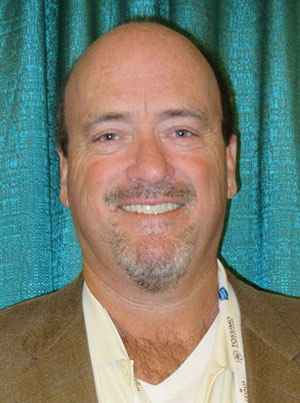 KEVIN DAW is president of Heritage Coffee Co. (London, ON, Canada), a private-label roaster serving the breaktime management industries. A 30-year veteran of OCS, water delivery and vending operations, he has concentrated on coffee roasting for the past two decades.
KEVIN DAW is president of Heritage Coffee Co. (London, ON, Canada), a private-label roaster serving the breaktime management industries. A 30-year veteran of OCS, water delivery and vending operations, he has concentrated on coffee roasting for the past two decades.